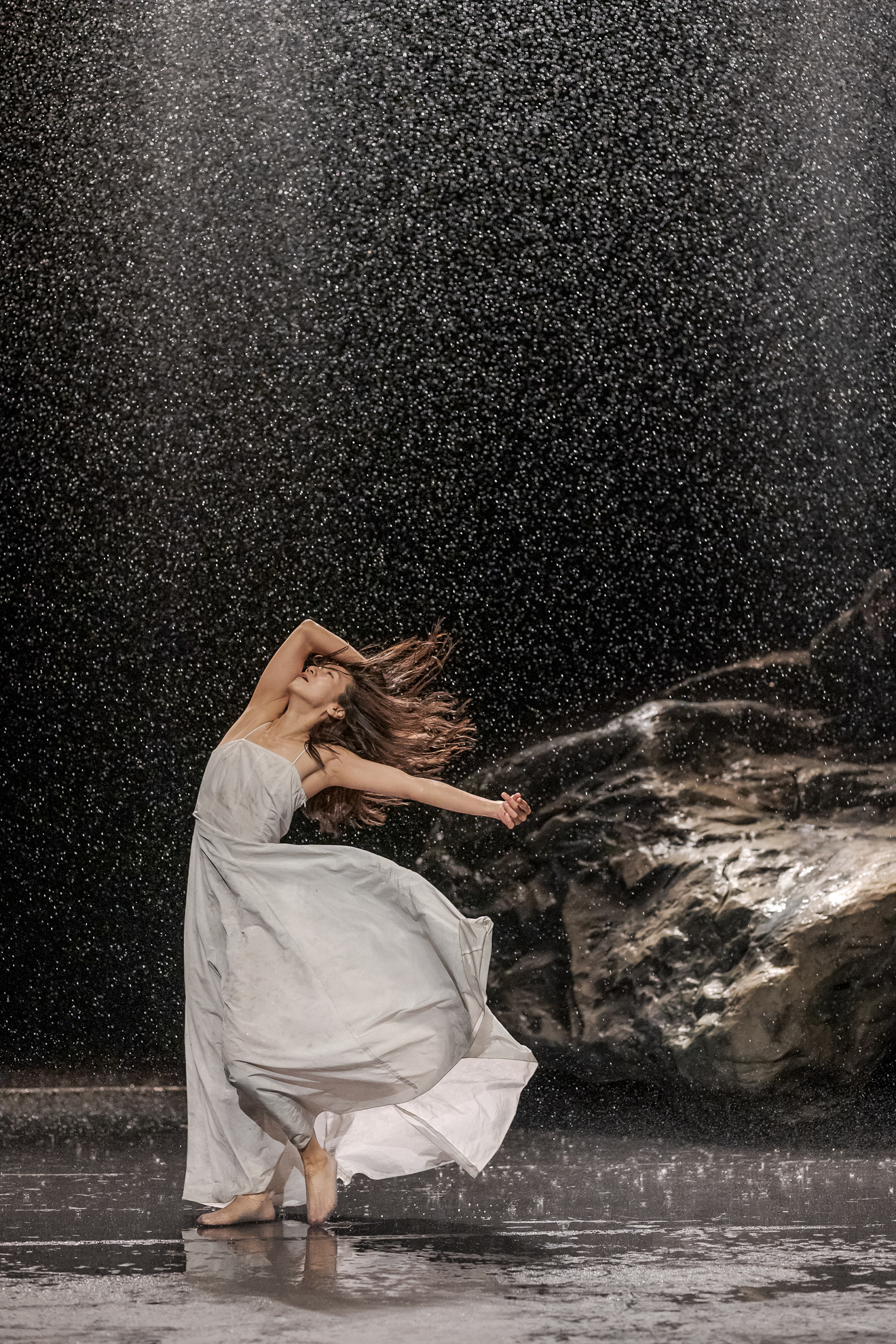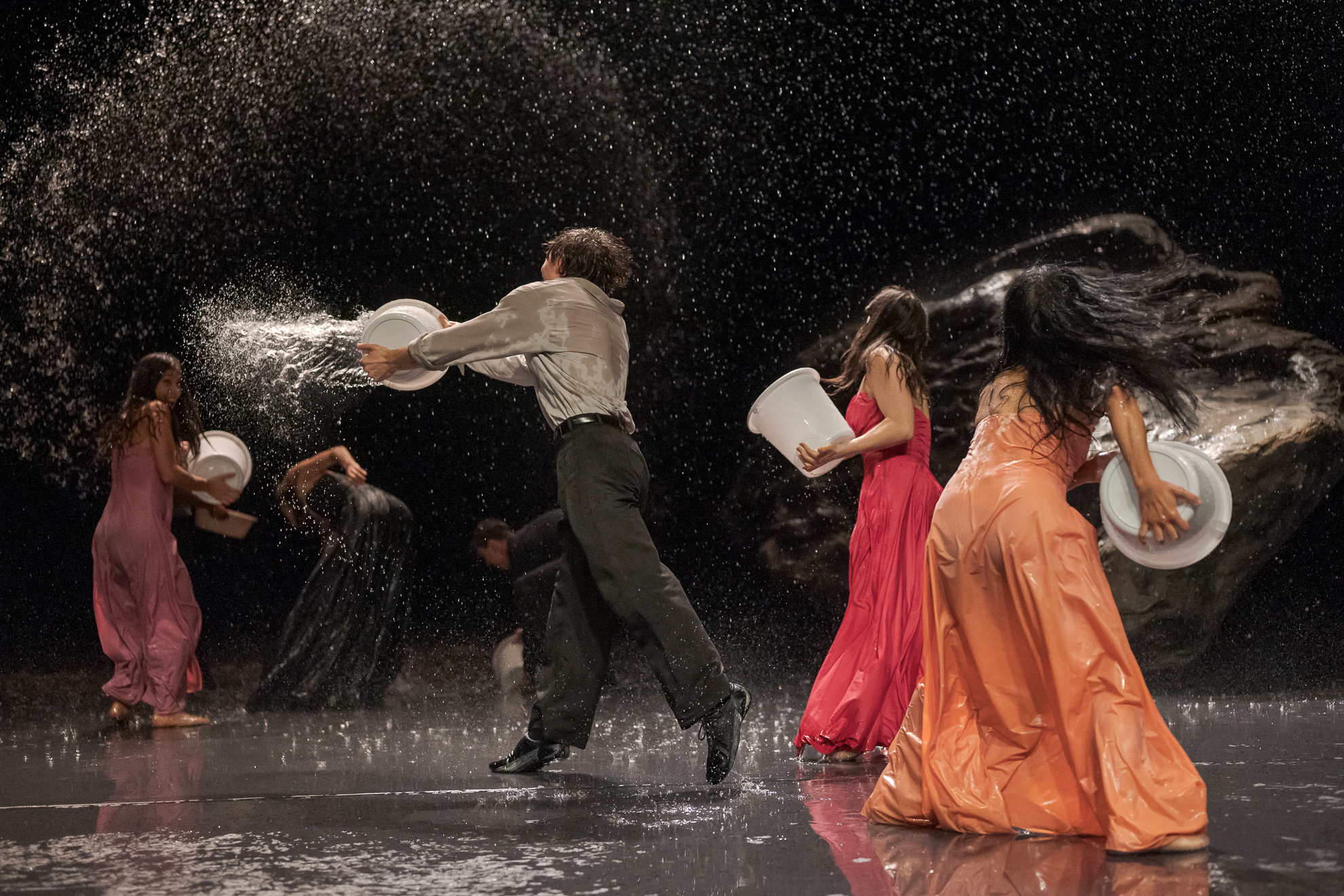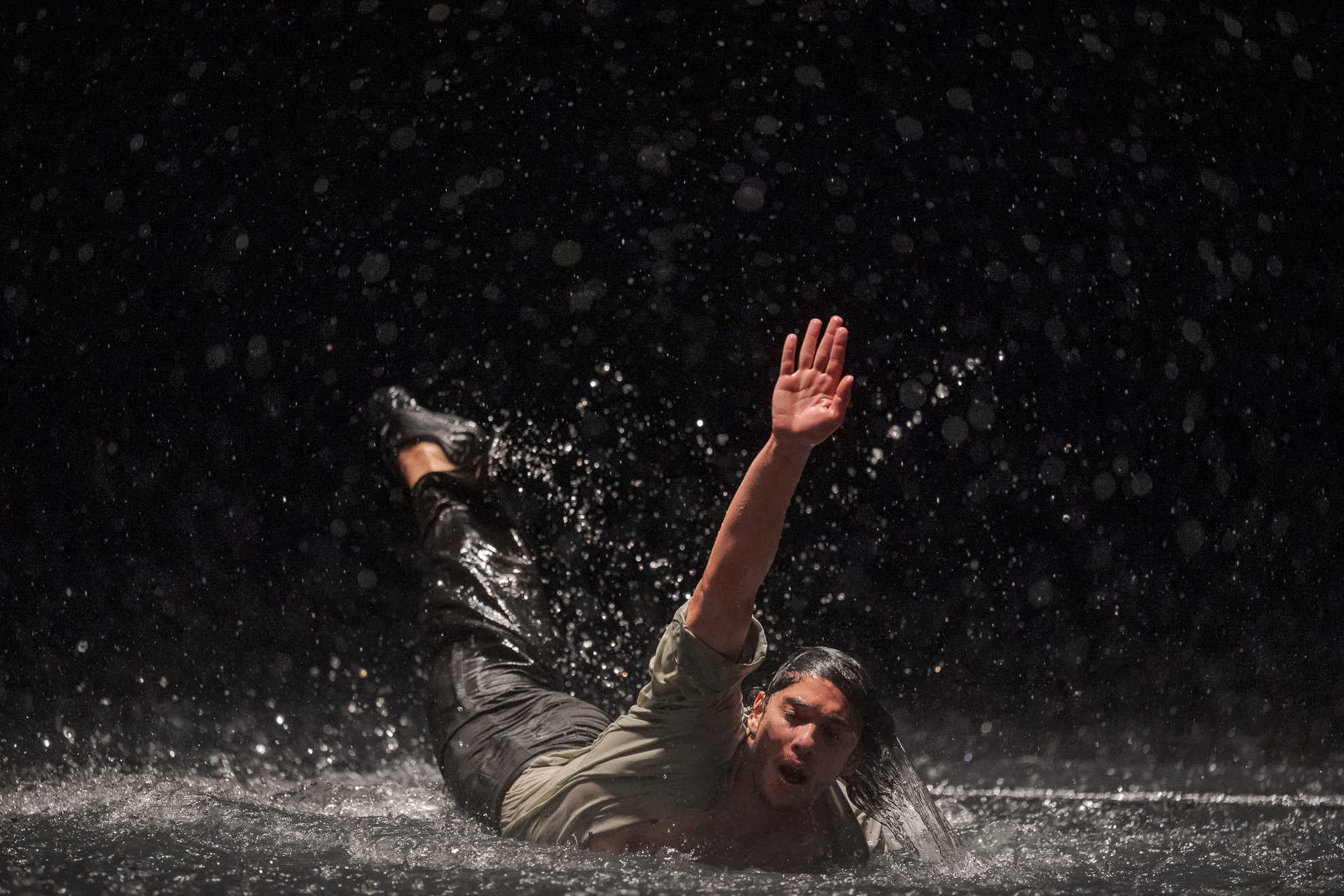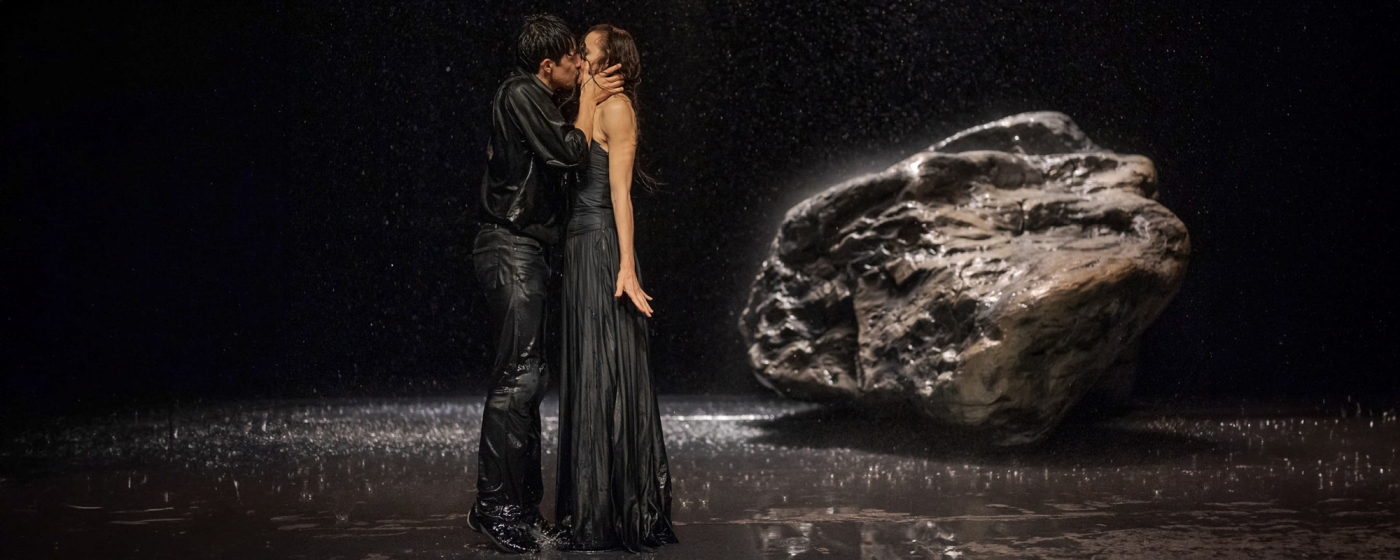Because I’m not as conversant as I might be with the vocabulary of dance, I find my response to seeing performances strongly coloured by what I’m bringing with me to the show. Usually that’s psychological – a mood, a memory – but in the case of Pina Bausch’s 2006 Vollmond, which returned to Sadlers Wells this month for the first time since its UK debut in 2013, I literally brought with me Shon Faye’s new memoir-polemic Love in Exile. The central thesis of Faye’s text, that “We ache for love, but love eludes us”, seemed to me directly relevant to what I saw on stage (on Valentine’s night, no less).

Vollmond (© Martin Argyroglo)
Here are the worst horrors of heteronormative coupledom. He strikes her repeatedly; when he winces, having injured himself, she starts apologising. Or: he disrupts her conversation with another man by gripping her hair in his teeth and literally dragging her away. Or: he approaches her tentatively and encircles her with his arms; she drops to her knees to slip out of the embrace yet lets herself be caught again and again. It’s entirely possible I’m reading too much into this; but the scene in which a man guides a woman to the top of the six-metre boulder that dominates Peter Pabst’s stage set and rests a plastic cup on her head, then scurries to the foot of the rock and squirts her with a water pistol until she flinches and the cup topples – a sequence repeated three times, while she remains docile or stoic throughout – seems to me to say a lot about what women, in particular, put up with in the pursuit of love and happiness.

Vollmond (© Martin Argyroglo)
And yet throughout there are sweet moments in which couples dance together in romantic harmony, problems resolved or set aside. These seem as utterly uncynical as some of Vollmond seems misanthropic. Throughout, there’s the looming, dominating presence of that seemingly immovably vast boulder, the performers scale and scramble over and drop from, and that gleams as though supernaturally precious; from the early misting of rain to the full-on downpour that continues through much of the second act and creates a river that flows across the stage in its shadow, it weathers everything, shines harder, seems indefatigable and immune to erosion.
I was horrified that the audience for last year’s Sadlers Wells revival of Nelken seemed to find its portrayal of fascist brutality rollickingly hilarious
This is Bausch and so there are jokes, too, the pratfalls and one-liners that I think have much to do with the choreographer’s incredible popularity. For those of us who don’t “understand” dance, here is a way to make the form accessible – a joke about milk boiling over is more easily describable to friends, for instance, than the transcendently beautiful cartwheeling double duet that’s one of the most beautiful things I will ever see on stage. And yes, one in a dozen (and there are dozens) of these gags raises a chuckle. But the “universal” humour of slapstick is the kind found in Mr Bean, and can, I think, lead to misreadings of Bausch’s work: I was horrified that the audience for last year’s Sadlers Wells revival of Nelken seemed to find its portrayal of fascist brutality rollickingly hilarious. Maybe there’s an argument that the moments of “pure dance”, of which there are many glorious examples in Vollmond, are elevated still further by contrast with these skits, but I’m not sure that the work would be terribly compromised if they were omitted.

Vollmond (© Martin Argyroglo)
The evening’s final set-pieces is its most joyous and exuberant. The romantic snafus and the petty interactions are replaced by a wild and watery free-for-all of dancers wallowing in the constantly flowing and falling water, splashing, flailing, gleefully hurling bucketfuls of water across one another, more carnival than orgy. The scene continues as the lights slowly dim to darkness, giving the impression of endlessness, an eternal frolic that communicates itself to the audience in a feeling of unseasonable warmth and vitality. Spring is coming. And love, like water, will find a way. C
In performance at Sadlers Wells until 23rd February, 2025







